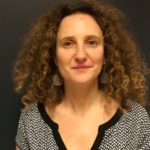Link to Pubmed [PMID] – 30642967
Proc. Natl. Acad. Sci. U.S.A. 2019 01;116(5):1802-1807
Infections caused by -including invasive pneumococcal diseases (IPDs)-remain a significant public health concern worldwide. The marked winter seasonality of IPDs is a striking, but still enigmatic aspect of pneumococcal epidemiology in nontropical climates. Here we confronted age-structured dynamic models of carriage transmission and disease with detailed IPD incidence data to test a range of hypotheses about the components and the mechanisms of pneumococcal seasonality. We find that seasonal variations in climate, influenza-like illnesses, and interindividual contacts jointly explain IPD seasonality. We show that both the carriage acquisition rate and the invasion rate vary seasonally, acting in concert to generate the marked seasonality typical of IPDs. We also find evidence that influenza-like illnesses increase the invasion rate in an age-specific manner, with a more pronounced effect in the elderly than in other demographics. Finally, we quantify the potential impact of seasonally timed interventions, a type of control measures that exploit pneumococcal seasonality to help reduce IPDs. Our findings shed light on the epidemiology of pneumococcus and may have notable implications for the control of pneumococcal infections.



